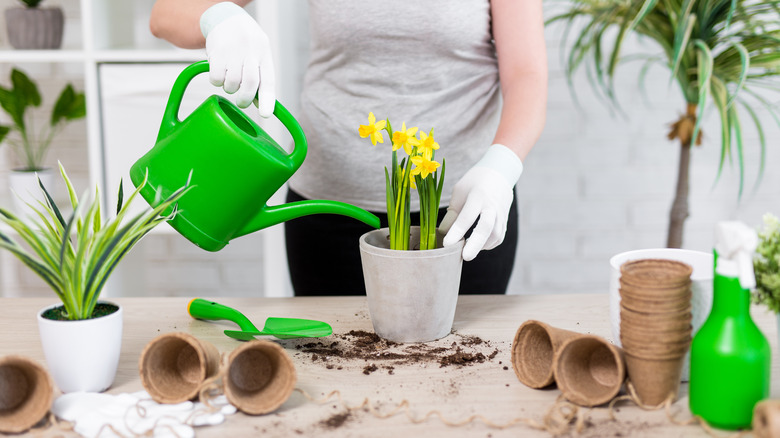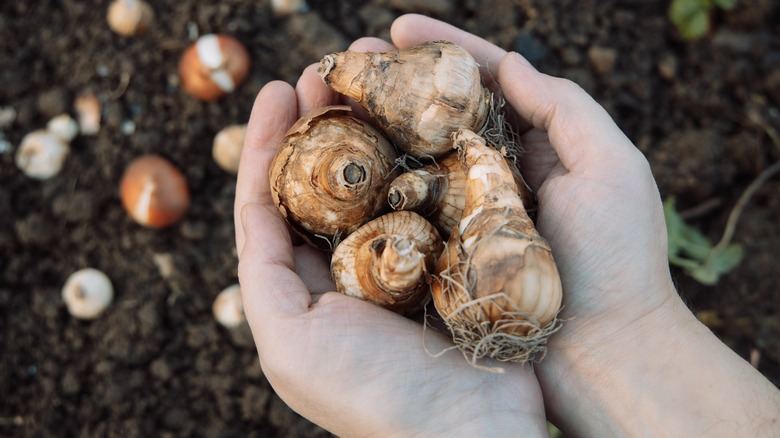Not all fertilizers for plants, especially flowering ones, are created equal. They can range in nutrient composition, release mechanisms, and intended purposes for the given plants. Additionally, fertilizers come in different formulations with varying ratios of nitrogen, phosphorus, and potassium, each serving distinct roles in plant development. The release mechanisms can differ, with options such as quick-release and slow-release fertilizers affecting the duration and timing of nutrient availability. Organic and synthetic fertilizers are also distinct in their environmental impact and nutrient release patterns. Therefore, selecting the right fertilizer involves considering the specific needs of the plants, the stage of growth, and environmental factors to ensure optimal results — all of which is especially true when it comes to daffodils. Choosing a fertilizer too high in nitrogen, for example, will result in undesirable growth for your daffodils.
Typically, nitrogen acts as a growth stimulant, fueling robust foliage in plants. While some is necessary for healthy plant development, an excess of nitrogen in the soil can result in disappointing daffodils. They specifically benefit more from a fertilizer with higher potassium and phosphorus content. A fertilizer richer in potassium and phosphorus ensures daffodils allocate their energy effectively. For beautifully blooming daffodils in your flower garden, choose a fertilizer that focuses on what matters most for this plant. Before amending the soil with anything, though, it’s best to start with a soil test to determine what’s missing, if anything.
Why to avoid nitrogen-heavy fertilizers

First, an overabundance of nitrogen can lead to an imbalance in nutrient uptake. Daffodils, being bulbous plants, allocate energy differently than other types of vegetation. Excessive nitrogen encourages rapid foliage growth at the expense of bulb development. This diversion of energy may result in reduced flower production and weakened bulbs, diminishing the overall health and vigor of the daffodil plants.
Furthermore, high nitrogen levels in the soil can make plants more susceptible to diseases and pests. The lush, tender foliage that develops in response to elevated nitrogen becomes an attractive target for various pathogens and insects. Diseases such as fungal infections and pests like aphids are more likely to thrive in this nutrient-rich environment, posing a further threat to the well-being of the daffodils.
In addition, nitrogen-heavy fertilizers can disrupt the natural ecological balance in the soil. Beneficial microorganisms that contribute to nutrient cycling may be adversely affected, leading to long-term soil health issues. Ultimately, while nitrogen is crucial for plant growth, an excess of it can disrupt the delicate equilibrium required for daffodils to flourish.
Which fertilizers to buy for daffodils

When planting daffodils, a ratio of 3-6-6 or 5-10-10 can be incorporated into the soil, doing so without directly touching the bulbs. The soil around the daffodils can be fertilized again as leaves emerge and once more as they begin to flower, each time with a low or zero dose of nitrogen.
In terms of types of fertilizer, it is recommended to use an organic slow-release fertilizer for daffodils as it provides a steady supply of nutrients over an extended period, promoting sustained growth without the risk of over-fertilization. Examples of natural fertilizers are bone meal or well-rotted manure. While the former can be purchased on Amazon for under $13, you can always check with your local nursery or hardware store for their recommendations for your garden and climate.
Additionally, it’s best to fertilize the flowers once more after they’ve bloomed in order to encourage the bulbs to absorb essential nutrients for the following year. This will help prepare your bulbs for winter and a strong start next spring. One final step that’ll also help is to deadhead your daffodils once the flowers die in order to redirect the plant’s energy back to the bulb, rather than seeding.



